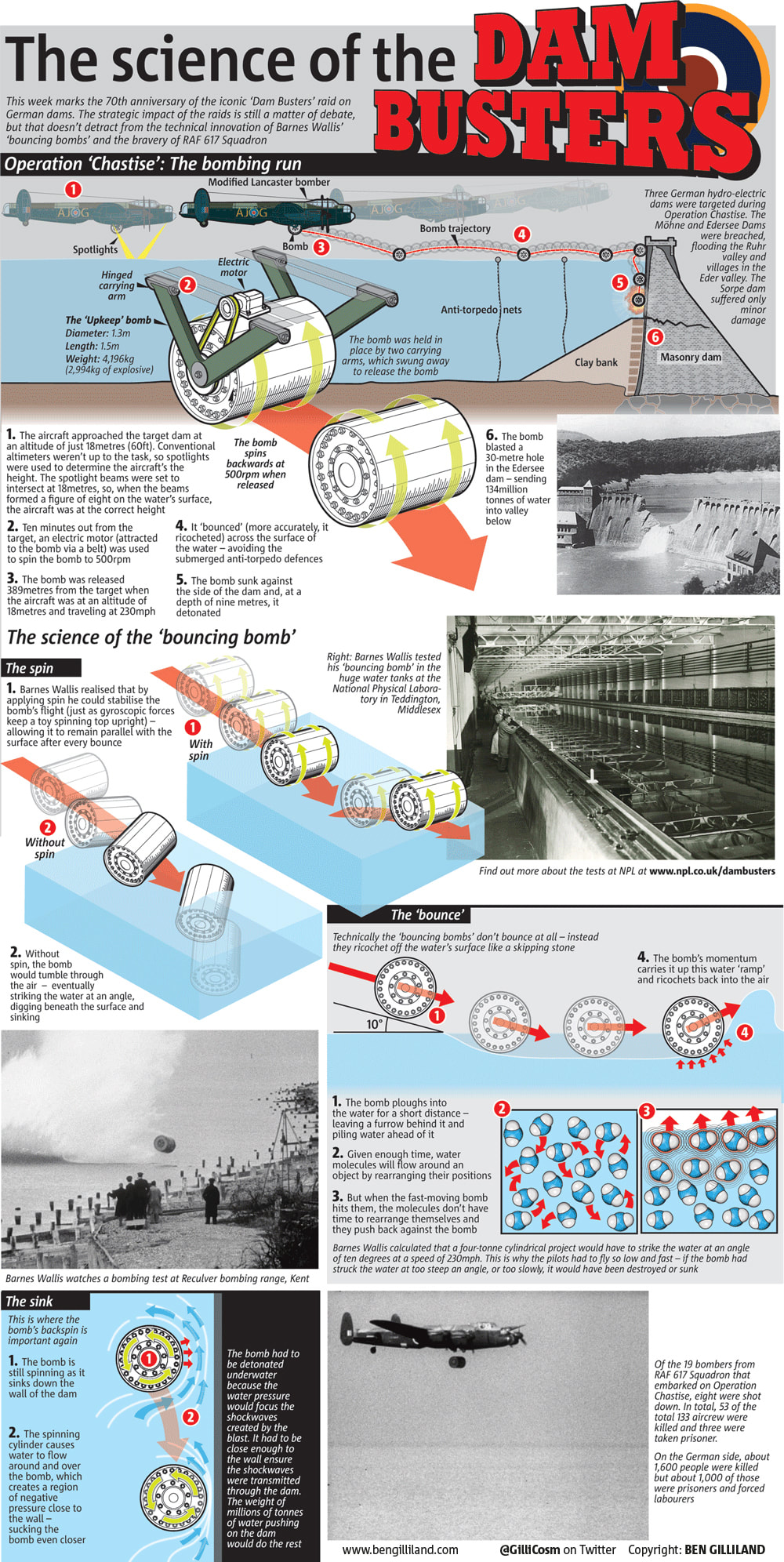|
Today is the 75th anniversary of the famous Dam Busters raids, so I thought I'd mark it myself by sharing an infographic I produced for the Metro Newspaper on the 70th anniversary. On the evening of May 16, 1943, 19 modified Lancaster bombers set out from RAF Scrampton to attack the dams of the industrial Ruhr region in Germany. The planes of the newly-formed 617 squadron were carrying a very special ‘bouncing bomb’ that, although it would have very little impact on the outcome of the war, would ensure the aircrew that deployed it and the man who designed it would be forever remembered as the legendary ‘Dam Busters’. During the height of World War II, Bomber Command was tasked with destroying as much of Germany’s industry as possible. They had tried targeting factories but these were quickly rebuilt so they turned their attention to targeting the power sources that supplied them – coal mines, oil fields and hydroelectric dams. Coal mines were too easily repaired and the oil fields were too far away, so the dams, which supplied both power and water to industry, became the target. Unfortunately, they faced two problems: firstly, dams are (damn) difficult to destroy – after all they are strong enough to hold millions of tonnes of water at bay (only a very large bomb, or an underwater torpedo strike would do the job) and, secondly, Hitler was aware of the importance of his dams so they were well defended by submerged anti-torpedo defenses. The ‘very large bomb’ idea was abandoned because the RAF didn’t have an aircraft big enough to carry it, so it had to be the underwater option. But how would they get round the defences? Enter engineer Barnes Wallis. He had an idea that, rather than trying to breach the anti-torpedo nets, you could bypass them altogether by ‘bouncing’ a bomb across the surface of the water in the same way that you might skip stone across a lake – the difference being, his ‘stone’ was a four tonne bomb. The final bomb, called ‘Upkeep’, was a masterpiece of innovation and improvisation and, when it was deployed on the evening of May 16, it performed (almost) flawlessly. Of the three dams targeted during Operation Chastise, the Möhne and Edersee Dams were breached, flooding the Ruhr valley and villages in the Eder valley– the third, the Sorpe, was only lightly damaged. If you are struggling to read the text (since it doesn't really get any bigger when you click on it), feel free to right click and download (or just drag to your desktop) and you will get a slightly more readable jpeg.
3 Comments
6/11/2019 10:09:00 am
I only know few details about it, but I didn't notice that it has been a lot of decades that we are celebrating 75th anniversary of the famous Dam Busters! Looking back, our history wasn't really beautiful. There were lots of wars and battles that made the past not really worthy of looking back. But if there are dates that should be commemorated, one of these is the annual anniversary of the famous Dam Busters. It was a good thing that you discussed its importance here.
Reply
Leave a Reply. |
Author
Ben Gilliland is a freelance science writer, graphic journalist, illustrator and author with more than 20 years of experience. This is where he talks about work he has done... on the off-chance anyone is interested. Archives
August 2018
Categories |

 RSS Feed
RSS Feed